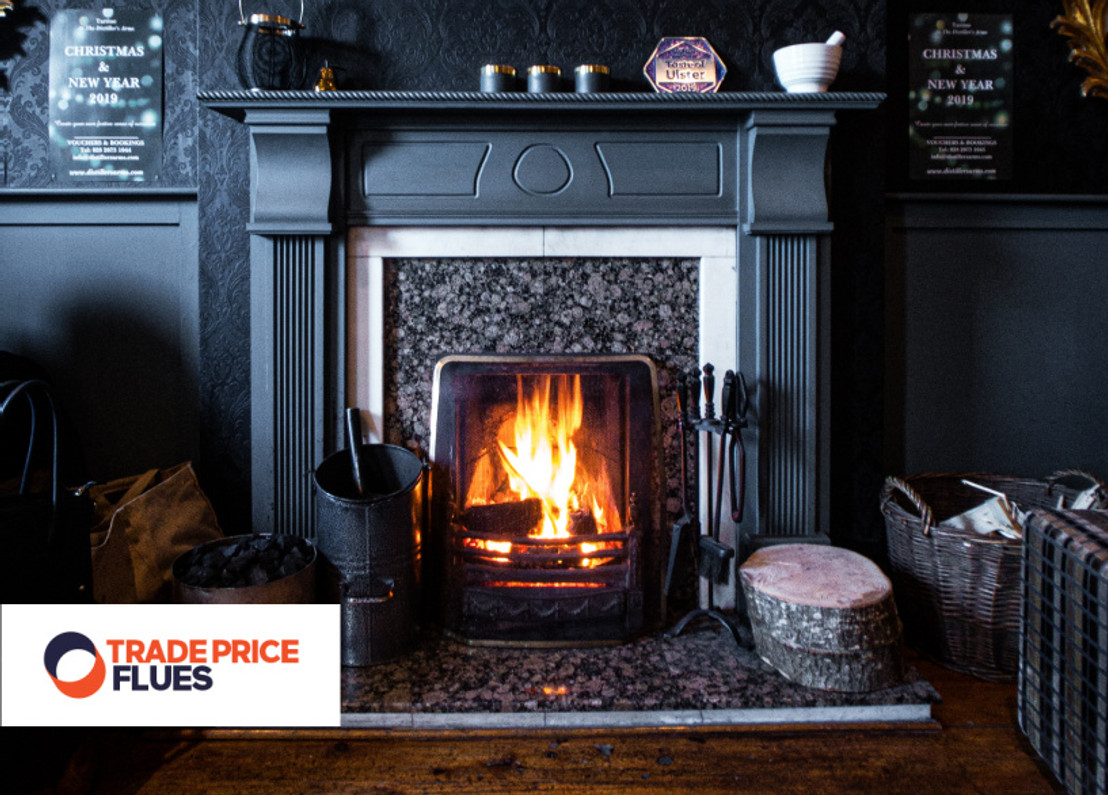The Causes of Chimney Downdraft and How to Prevent It
There’s nothing better than a roaring fire to help you relax. But when you start suffering from a chimney downdraft that feeling of relaxation can quickly turn to stress. Chimney downdrafts can prevent your fire from functioning properly, set off carbon monoxide alarms and even affect your health. If it’s a problem you’re suffering from, carry on reading to find out more about the causes of chimney downdraft and how you can prevent it in your home.
How chimneys work
In order to fully understand the causes of chimney downdraft and how to fix it, it’s first important to comprehend how a chimney functions.
Chimney components
It’s easy to think that a chimney is little more than a stack of bricks. However, there are actually many different sections that come together to create a functioning chimney. There’s the smoke shelf, crown, cap, chimney damper and flue. Together, these form a complete chimney that helps draw away smoke and combustibles from your fire.
Chimney function
Chimneys operate on a principle known as the chimney effect (also known as the stack effect. Stack is an older, industrial name for chimneys).
The chimney effect works on the basis that hot air rises above cold air.
When your fire is burning it is giving off hot gases. This heats up the air in the flue above the fire, creating a pressure difference between the air in your room and the air in the flue. This pressure difference causes the hot air to rise up the flue and out of the top of your chimney.
As the hot air rises it is replaced by cooler air from your room. This cooler air feeds the fire helping it burn. As the fire burns it heats up the air in the flue above it, which in turn passes up the flue and out of the chimney. Whilst it might appear that the fire is ‘sucking in’ air from the room, what is actually happening is that the weight of dense cold air outside of the building is pushing down to force air into the room and thus pushing the lighter, hot air in the flue up and out of the chimney.
In a properly functioning fire and chimney, this effectively creates a continual movement of air. This movement is known as a ‘draft’. So, if your chimney is not functioning properly, then it will usually be described as having insufficient draft.
It’s the difference in pressure that really makes the difference. If this pressure is disrupted, then that’s when you’ll start experiencing problems with your chimney such as chimney downdraft.
What is chimney downdraft?
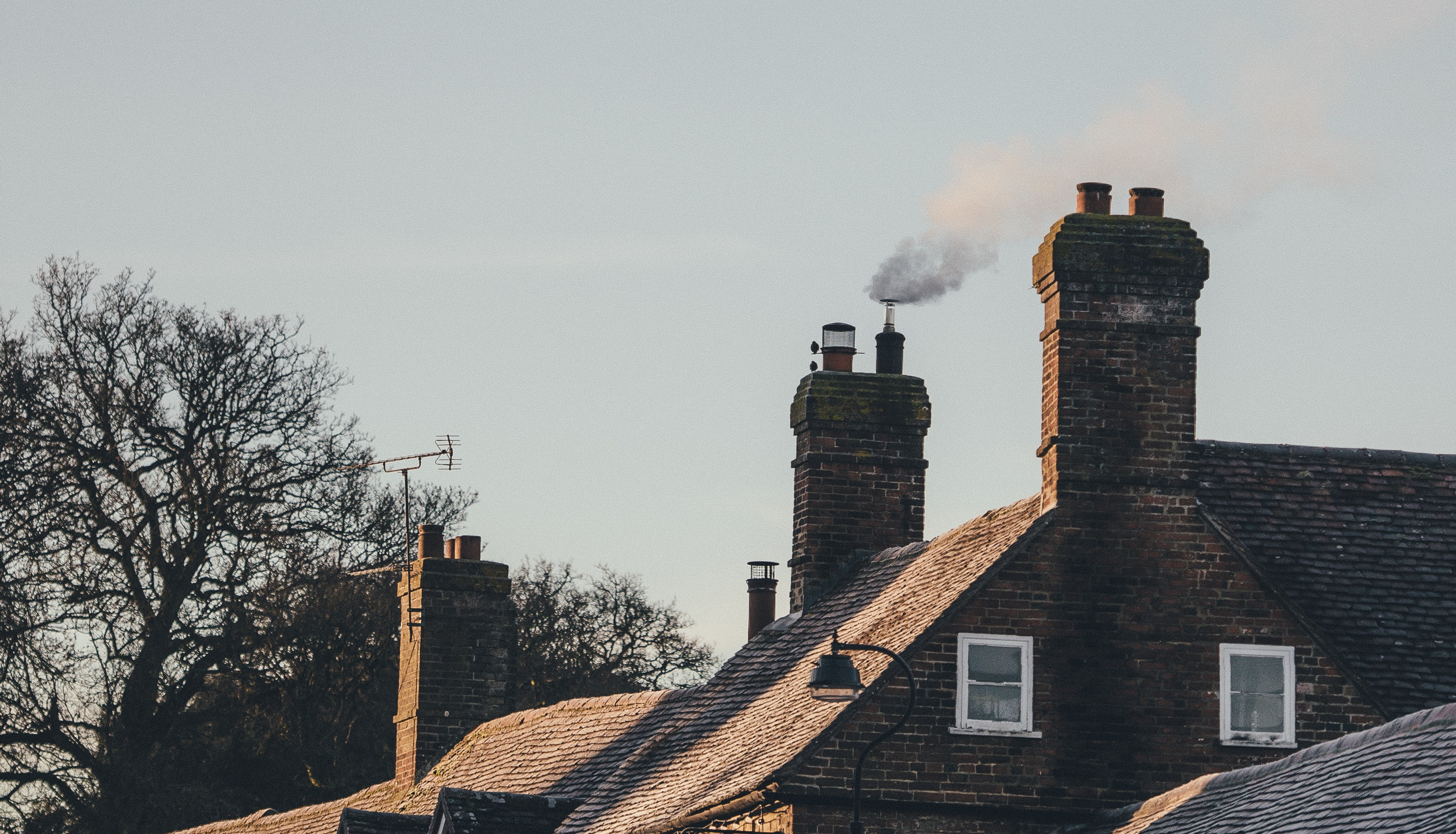
Now that we’ve covered the fundamentals of how chimneys function, let’s take a closer look at chimney downdrafts.
Chimney downdraft refers to the situation in which the smoke and other combustibles from your fire no longer travel up and out of the chimney.
With severe cases of chimney downdraft, not only will the smoke no longer travel up the chimney, but it can actually travel back down and billow out into your room.
Chimney downdraft will result in intermittent puffs of smoke emanating from your fireplace or stove. If you are experiencing a continuous flow of smoke from your fireplace or stove, then it’s likely to be a problem other than chimney downdraft (such as an unswept/blocked chimney, incorrect size chimney pot, insufficient chimney height).
How to tell if you have chimney downdraft
Having just read the section above, you may assume it’s fairly easy to spot the signs of chimney downdraft (after all, who would miss the sight of smoke billowing into their living room?!). However, chimney downdraft is sometimes more subtle and harder to spot.
Even if chimney downdraft isn’t causing you drastic problems, it’s still worth remedying as even a small amount of downdraft will reduce the performance of your fire, causing your fuel bills to increase.
So, what are the key signs of chimney downdraft to look for? We’ve set out some key indications below.
Visible plumes of smoke
This is the most obvious sign that you are suffering from chimney downdraft.
In the most serious cases of downdraft, you may actually see clouds of smoke building up in your room. This is a result of your fire being unable to expel the smoke and combustibles up the chimney flue.
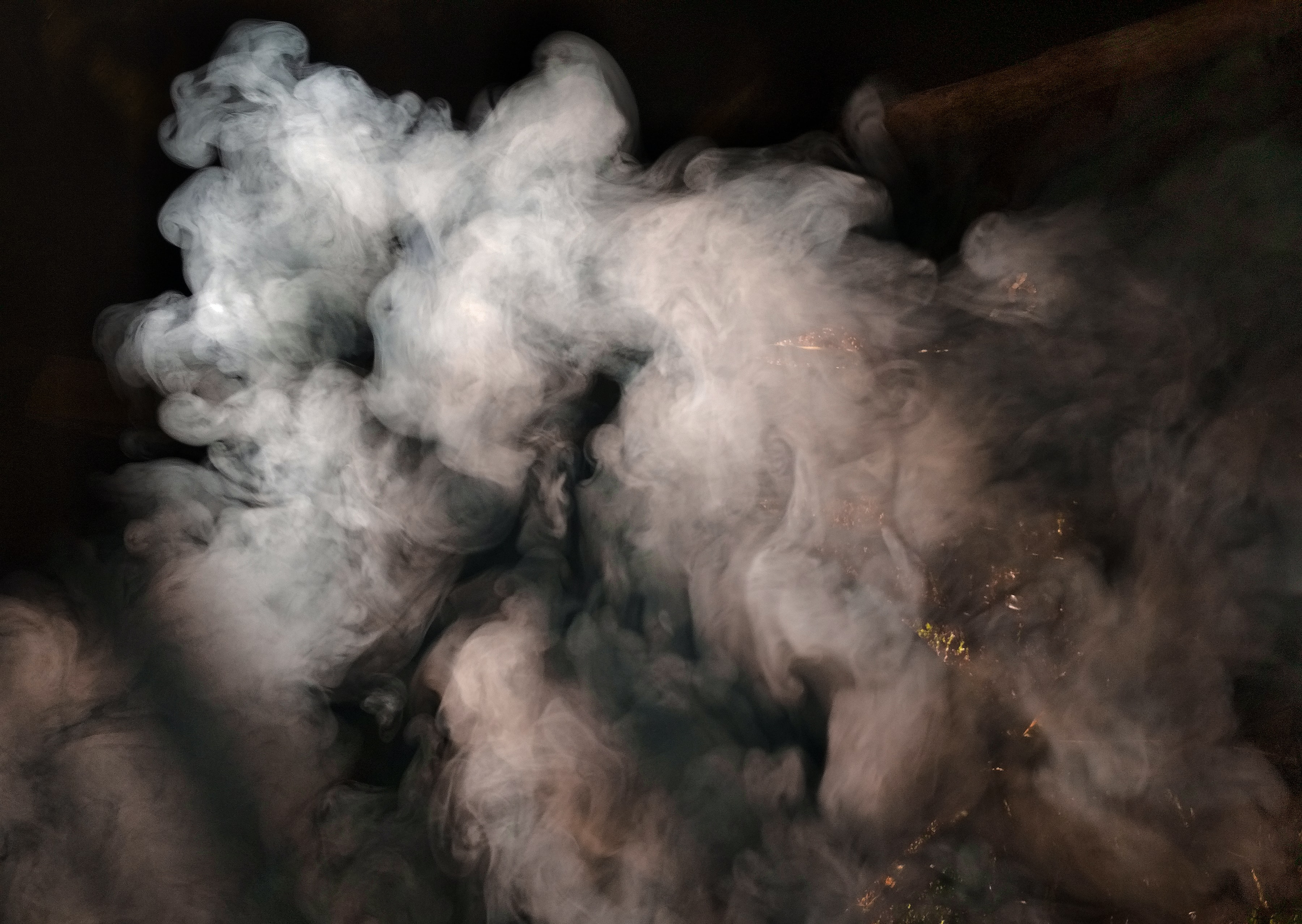
Eye and nasal irritation
Smoke isn’t always visible. Chimney downdraft may be causing your fireplace or stove to blow small puffs of smoke into your room, but sometimes this smoke isn’t visible to the naked eye. Instead, you may experience eye or nasal irritation. If your eyes or nose start to get sore every time your fire is burning, then you may be suffering from a degree of chimney downdraft.
Soot on glass
If you have a stove or fireplace with a glass window, then a build up of soot on this glass can be an indicator of chimney downdraft. The negative air pressure that is generated by a downdraft will cause soot to accumulate on the glass of your stove or fireplace.
If you have an open solid fuel burning fireplace, chimney downdraft may even cause soot to build up on the windows in your rooms. If this is happening, you should aim to remedy the downdraft asap.
Carbon Monoxide alarm triggers
If your carbon monoxide alarm is triggering unexpectedly (and you should definitely have a carbon monoxide alarm), then the cause could be chimney downdraft.
Don’t ignore any ‘false alarms’. If you can’t find any obvious reason why your carbon monoxide alarm is being triggered, then it may be down to low levels of smoke penetrating your room. Remember, smoke isn’t always visible to the naked eye.
Gusts of hot air from the fireplace
Yes, you want your fireplace to be giving off plenty of heat. But, if you feel like you’re occasionally getting hit by ‘gusts’ of hot air from your fire, then you may have a chimney downdraft.
These blasts of hot air won’t be continuous, instead they’ll be intermittent, occurring as and when changes in air pressure happen.
Causes of chimney downdraft
If you’ve spotted some of the tell tale signs of chimney downdraft in your home, then you’ll want to know what’s causing it. Typically chimney downdraft occurs because the chimney is not high enough, or there are tall buildings or trees/shrubbery nearby that are interfering with the wind currents around the chimney.
It’s important to note at this stage (and we’ve already mentioned this earlier), but you should distinguish between a fireplace that is continually expelling smoke and one that is doing so only occasionally. If your fireplace is continually expelling smoke, then chimney downdraft is unlikely to be the issue. If your fireplace is only occasionally expelling smoke, then carry on reading.
Below, we’ve set out some of the most common causes of chimney downdraft.
Wind induced downdraft
If you live in a semi-detached or terraced property and share your chimney stack with a neighbour then you may suffer what is called ‘wind induced downdraft’.
As homes are becoming increasingly air tight due to double glazing and improved insulation, this can lead to imbalances in air pressures between two properties.
For example, if you have a lit fire, yet your neighbour with whom you share a chimney stack does not have a fire lit, wind passing across the top of the chimney can cause the hot air rising from your fire to be drawn down into your neighbour’s chimney flue and into their room, leading to chimney downdraft in your fireplace.
How to prevent wind induced chimney downdraft
As we have seen, the key cause of this type of chimney downdraft is the passage of wind across the top of your chimney.
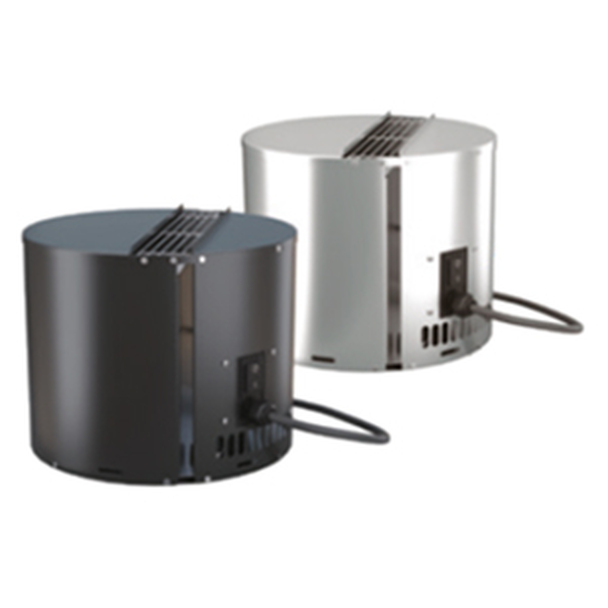
Shop Now - Vertical Discharge Draftbooster Chimney Fan
You can reduce the impact of wind on your chimney (and thus reduce the occurrence of downdraft), by installing a chimney fan. This will not only help deflect the wind from the top of your chimney, but it’ll help improve the ‘draw’ of your chimney, pulling smoke and combustibles away from the fire.
Dynamic wind loading
Dynamic wind loading refers to situations in which different air pressures build up on different sides of your property (and therefore chimney).
For example, high pressure may build up on the windward side of your chimney, whilst low pressure builds up on the lee side of the chimney. This build up of low pressure creates a vacuum which will act on any openings in your home (such as open windows or doors).
This vacuum pulls air out of your home, thus disrupting the cycle of air that a chimney requires. As this air rushes out of your home, air will be pushed down the chimney in order to replace it - creating a chimney downdraft.
How to prevent dynamic wind loading induced chimney downdraft
This type of chimney downdraft is most easily rectified by closing any open doors, windows and exhaust vents in your home. This is especially helpful on windy days when air pressure differences are more likely to be impacting your home (and chimney).
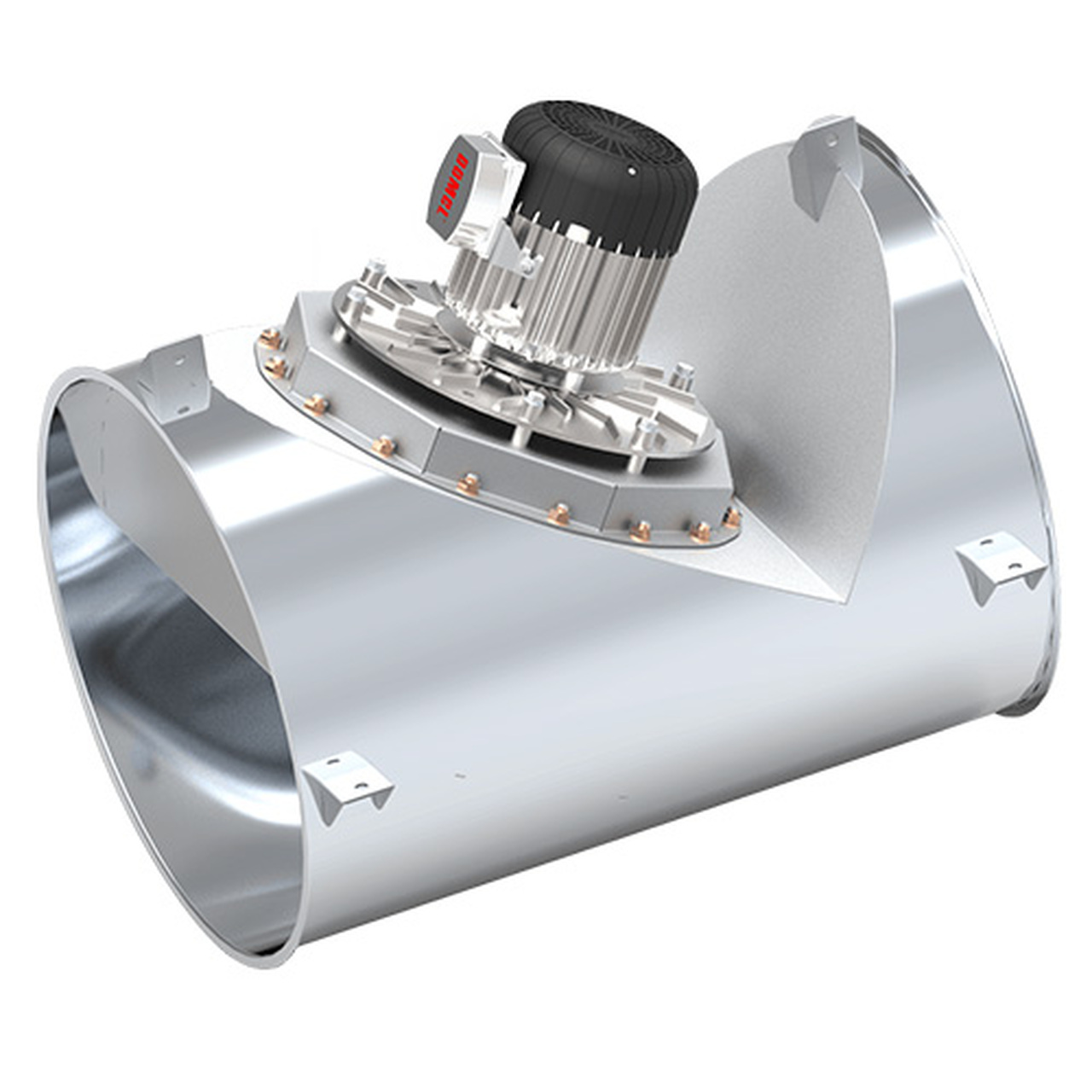
Shop Now - CFIR Chimney Fan
You can also combat this type of chimney downdraft with an efficient chimney fan. Chimney fans are easily affixed to the top of chimneys and can be turned on and off as and when needed using a remote control.
Damaged chimney or chimney components
Another cause of chimney downdraft is a damaged chimney (or part of the chimney). If you have an old or damaged chimney flue liner, then you increase the chances of experiencing chimney downdraft. This is because the flue liner might be impairing the natural ‘draw’ of the flue, causing smoke and combustibles to fall back down into the fire and out into your room.
How to prevent damaged chimney induced chimney downdraft
You should take care to inspect as much of the chimney as you can. If that’s not possible, then hire a chimney sweep to do this for you. A chimney sweep will be able to tell you if any parts of your chimney need replacing.
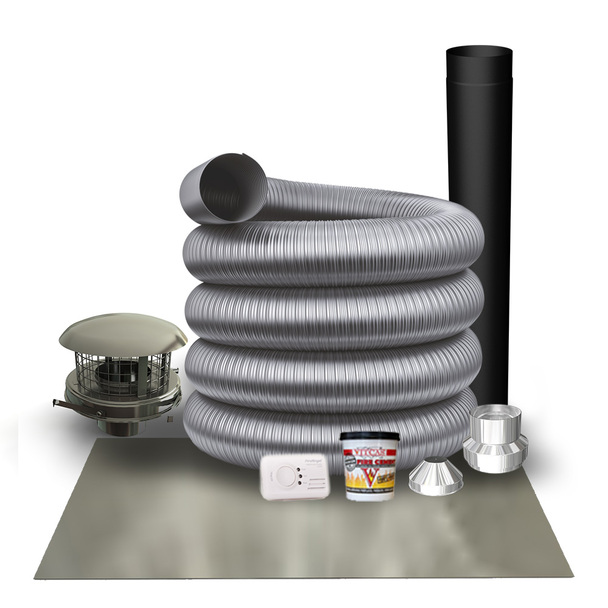
Shop Now - 5” - 6” 316 Super Flex Chimney Flue Liner Full Fitting Kit
If it transpires that it’s your chimney flue liner that’s causing the downdraft, then it’s a fairly straightforward job to figure out which one you need for your chimney, selecting the right one and having it fitted.
Poor quality wood
Poor quality, moist wood can be another contributory factor toward chimney downdraft. Why? Because, poor quality wood does not burn at a sufficient temperature to generate the heat required for an effective chimney ‘draw’. If your fire isn’t giving off enough heat, the smoke and combustibles from your fire will not rise far enough up your chimney flue to escape, and will fall back down into your fireplace and room.
How to prevent poor quality wood induced chimney downdraft
Get your fire burning properly, with high-quality wood and you won’t experience this problem.
We recommend buying the best ‘Ready to Burn’ fuels that you can afford. As of the 1st May 2021, the sale of traditional house coal and wet wood is banned anyway, so any wood you buy from then on should be of high quality.
We hope you’ve found our guide to the causes of chimney downdraft and how to prevent it useful. Explore the rest of the Trade Price Flues website to find everything you need to create an effective, efficient chimney.
Shop a huge range of chimney supplies at Trade Price Flues now
Read more chimney and flue advice on the Trade Price Flues blog…
A Guide to Ready to Burn Fuels | Chimney Sweeping: A Complete Guide | What Different Types of Chimneys Are There?
Latest Articles
-
Air Pollution Down in the UK Despite Record Wood Burner Sales
Great news! Wood-burning stoves, once considered environmental villains, have transformed into eco-f …18th Apr 2024 -
A Guide to Stove Installation in Lodges, Sheds, and Shepherd’s Huts
Shepherd’s huts, lodges, and sheds have become increasingly popular as charming retreats or alternat …25th Mar 2024 -
Pinned vs. Pinless Moisture Meters: Which is Best for Firewood?
When you collect or buy firewood, it usually starts very moist inside. Using sopping wet wood to bur …4th Mar 2024




